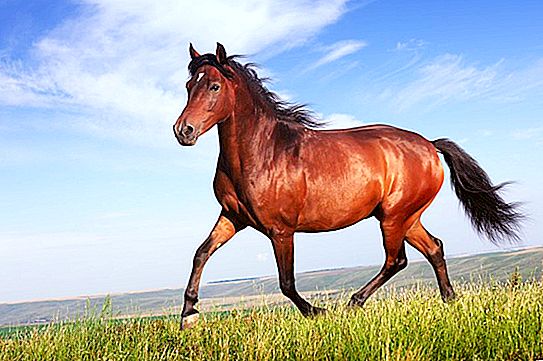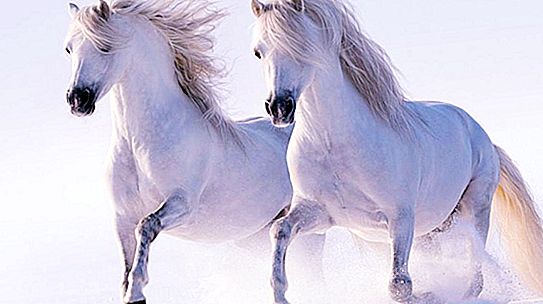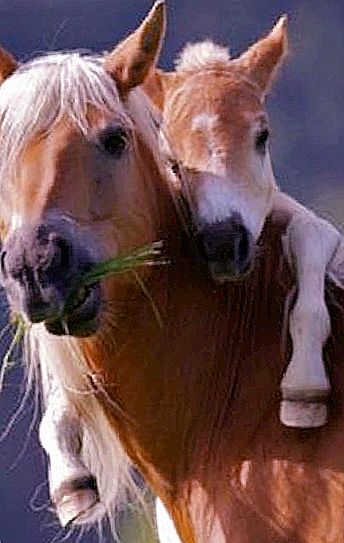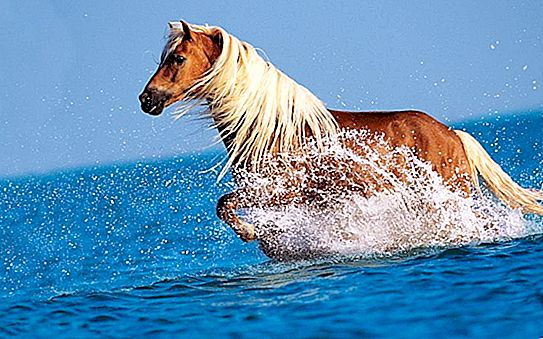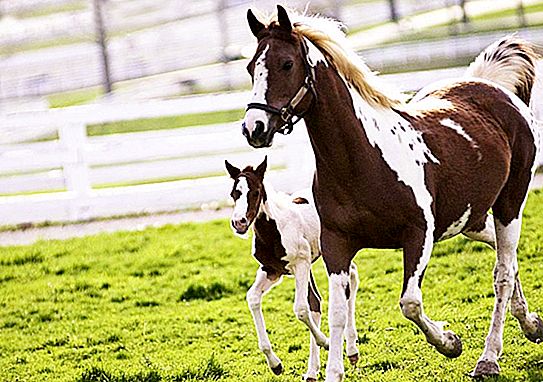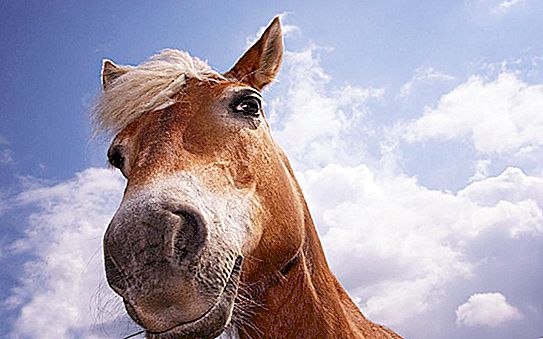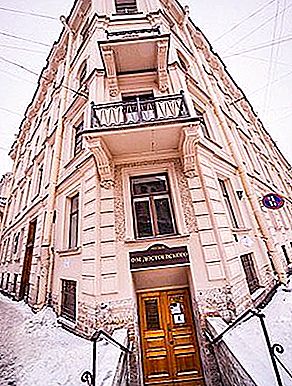A horse is not only smart and beautiful, but also a warm animal. Everyone who had the pleasure of hugging him or touching him briefly will say that the horse's body temperature is higher than human. Normally, it is 37.5 - 38.5 degrees. To maintain such an indicator, nature has devised a rather complicated thermoregulation scheme.
Yes, and other basic life-saving systems of horses have their own characteristics. Besides the fact that they breathe only through the nose, the body’s work on oxygen processing contains other differences, as does the cardiovascular apparatus - everything in the horse’s body is tailored to their lifestyle. People can only provide conditions in which all these unique mechanisms will work most effectively.
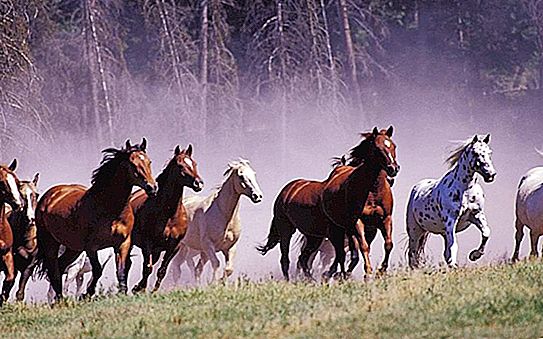
Lifestyle, thermoregulation and maintaining a general physiological balance
The ability to maintain a horse's body temperature optimal for life was gained during evolution. And these are not only physical changes in the body. The lifestyle itself helps to normalize the balance:
- horses need to be in the herd - in addition to giving them a chance to warm themselves, staying in a team adjusts the work of all areas of the brain inherent in initially herd animals;
- requires the ability to constantly move - a short-term way to generate heat in critical conditions and the prevention of physical inactivity;
- it is important to have access to feed at any time - with malnutrition, the horse's body temperature decreases; however, food will not only bring warmth, thanks to the combustion of various chemical components, but also protect the stomach from constantly produced juice of high acidity;
- even if the animals are on the street, they should be able to use shelter at any time, both to protect from the cold and to avoid overheating - studies have recorded a temperature increase of 1.2 ° C in horses that have been exposed to the sun for a long time;
- maintaining the proper condition of the hooves, which are part of the thermoregulation system (the use of horseshoes and nails violates the natural balance of this part, and, consequently, the entire body of the horse).
The conditions of detention, close to natural, allow the body to maintain harmony and function better.
Heat generation
Heat is generated due to the breakdown of the nutrients entering the body. The main energy supplier is the oxidation of organic components.
The temperature of the consumed food and water has some effect.
The horse's body temperature rises with intense physical exertion. With a sharp cooling in the places of keeping horses, the latter have short-term physical activity. In motion, animals warm themselves until they have other means of maintaining body temperature.
As an extreme radical measure, the horse has trembling in reserve - in this way the molecules of adenosine triphosphate break down in the muscles, bringing heat. It can also be a consequence of hypothermia. However, in a healthy horse, body temperature quickly begins to be regulated by standard mechanisms, and the stressful option is turned off.
Heat-saving horse mechanisms
Mainly coverings help to save the generated heat:
- first of all, hairy - in winter it is thicker and longer with a horse; this mechanism works with orientation not only on temperature changes, but also the duration of daylight hours; information is transmitted even to a foal in the womb - those born in winter have more prepared coat;
- the presence of a fat layer on the basis of the hair - if it was not destroyed by constant treatment with shampoo, the substance will protect the hair from getting completely wet in the rain and will provide better heat preservation at the skin;
- the skin contributes to maintaining the horse's body temperature both in the process of conservation and during heat transfer;
- decreased animal activity;
- reserves of adipose tissue.
The effect of cooling the body
In the process of heat transfer, the main role in the horse is played by the skin. Compared to cattle, for example, it is thinner. This is an important mechanism of chemical thermoregulation. Approximately 80% of the cooling of the body is due to the evaporation of moisture through sweating.
In addition, a network of capillaries is located on its surface. Their narrowing or expansion, depending on the conditions and condition of the body, ensures the flow of the required amount of blood, the temperature of which will decrease when approaching the integument of the body.
Sweat glands are included in the next step. Their secret, evaporating, cools the skin and blood on the surface of the body when the load on the body or the ambient temperature rises significantly.
Cooling the body also contributes to an increase in respiratory rate.
How to measure a horse’s temperature
The temperature in horses is measured with an ordinary thermometer. If this is not an infrared device, but a classic mercury or electronic thermometer, then the measurement occurs rectally - easier to say - in the rectum. The process takes from one minute to ten. Depends on the thermometer model.
So that the tool does not go too deep or does not fall out, it is tied to the upper part. The other end of the bandage (or of any rope, lace - depends on what is most likely to be untied with the least probability) is fixed with a clothespin or tied to the base of the horse's tail.
Temperature measurement with modern infrared thermometers greatly simplifies the process. With this method of examination, it is necessary to take into account the possible difference with the norm - since the standards are designed to measure through the mucous membrane, and the temperatures of these zones of the body are always slightly higher than on its integument.
Indicators for a healthy body
The horse’s body temperature should normally be between 37.5 and 38.5 degrees Celsius. This is an indicator for an adult animal. In older individuals, it is lower than in young ones. For foals, the temperature will be normal at 39.5 degrees.
Mares are also slightly higher than stallions and geldings. And in the foals, a certain increase is observed several weeks before the birth. Such a change in temperature in the horse is normal.
Data may vary during the day - morning figures are larger than evening ones, although from 21 to 22 hours there is a period of increase before the night recession. Dependence on the physical activity of the horse and its diet, environment, character and breed was noted. But these fluctuations will be insignificant, as well as differences in respiratory rate, heartbeat.
It is believed that the temperature of horses is influenced by their temperament: owners of a more relaxed nature, massive, will have lower activity indicators of all body systems. Although many experts do not associate such differences with psychological characteristics, but exclusively with the dimensions of the animals.
The main indicators of health along with temperature are the breath and pulse of the horse. On average, the adult norm is from eight to sixteen cycles of inhalation-exhalation per minute, during the same time the heart produces from 24 to 44 beats.
However, one should not judge the condition of small foals by these numbers - in comparison with adult animals, their pulse is just crazy - up to 130 beats in one minute.
Horse breathing score
The number of inspirations and expirations is simple to determine - the external signs of the horse are clearly visible - these are movements of the nostrils, chest and inguinal region. In winter, counting can be done in clubs of steam from the nose. The result of the measurement should be evaluated according to normative indicators appropriate to the situation (after quick paces and hard work, the breathing rate can be accelerated eight times).
The process should take place calmly, without wheezing, whistling, sniffling and shortness of breath (the latter can be recognized by double inhalation or exhalation).
The breathing should be rhythmic, quite deep - at rest, horses can inhale 5-6 liters, which is twice as much as the average adult with maximum effort. During rapid movement, the amount of air inhaled by horses can double or even triple.

